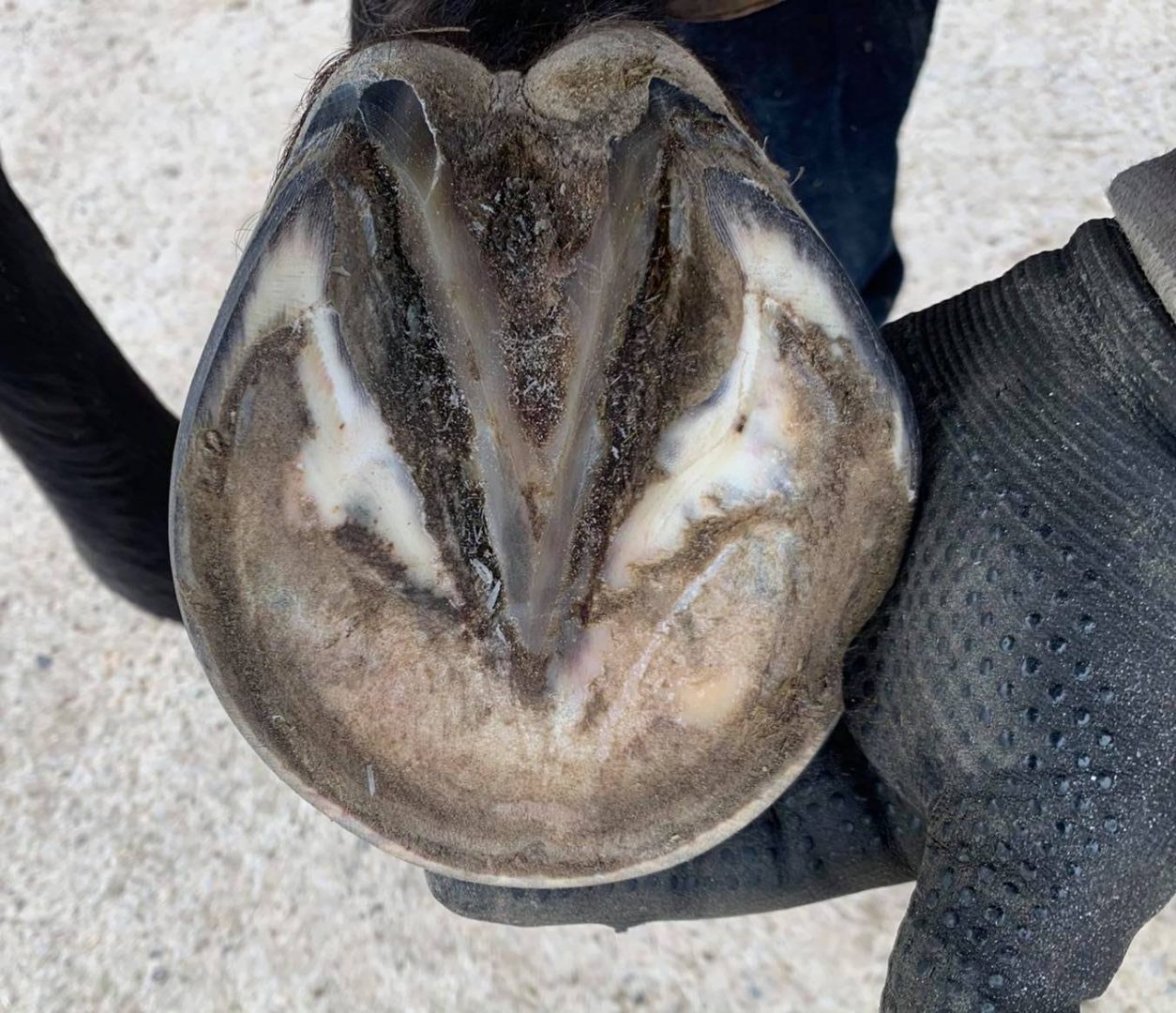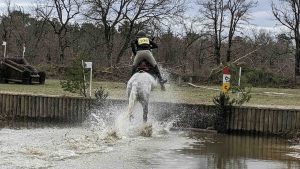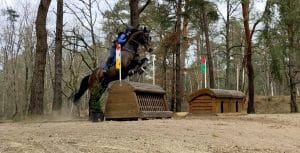Farrier practitioner for 16 years, freelance since January 2012, Florian Soldner works in eastern France. Experienced in taking care of classic, sports and orthopaedic horseshoes, this “Haut-Rhinois” farrier is an insatiable and surprising learner.
Infiltration into the barefoot world with Florian!
Curiosity, this pretty motivation
Already fond of improvements – having taken part in advanced training organized by Stefan Werhli and Julien Houser (WEPA) – it is however far from his usual colleagues that Florian has decided to allocate his time during a day devoted to initiation barefoot. Incredible but true, would the farrier be an equine podiatrist who ignores himself?
“I’m curious and we have a lot of barefoot customers. I have always had requests for places. Most of my clients are quite satisfied with my services. This led me to ask myself questions”, Florian shares with us.
“I wondered why are trimmers so successful? What do they have more than us (the farriers)? What are they doing more than us?”
A great curiosity that led Florian to participate in this day dedicated to the approach of barefoot, according to the trimmers.

Farrier and podiatry, close cousins?
“After this day, I was able to conclude that in the execution of the trimming, there are ultimately few differences. The difference that I have seen is mainly in the communication and in the explanations. To be able to communicate and explain, you have to know what you are talking about, importance of understanding that the bare foot is a whole. The importance of explaining to customers what you can and cannot do. Our job is not to shoe the horses, it is to take care of the horses by maintaining their feet, and this by any means. If it is not necessary to shoe it we must be able to do only one tread; that goes through information, advice and trimming itself”, explains Florian.
Similar article
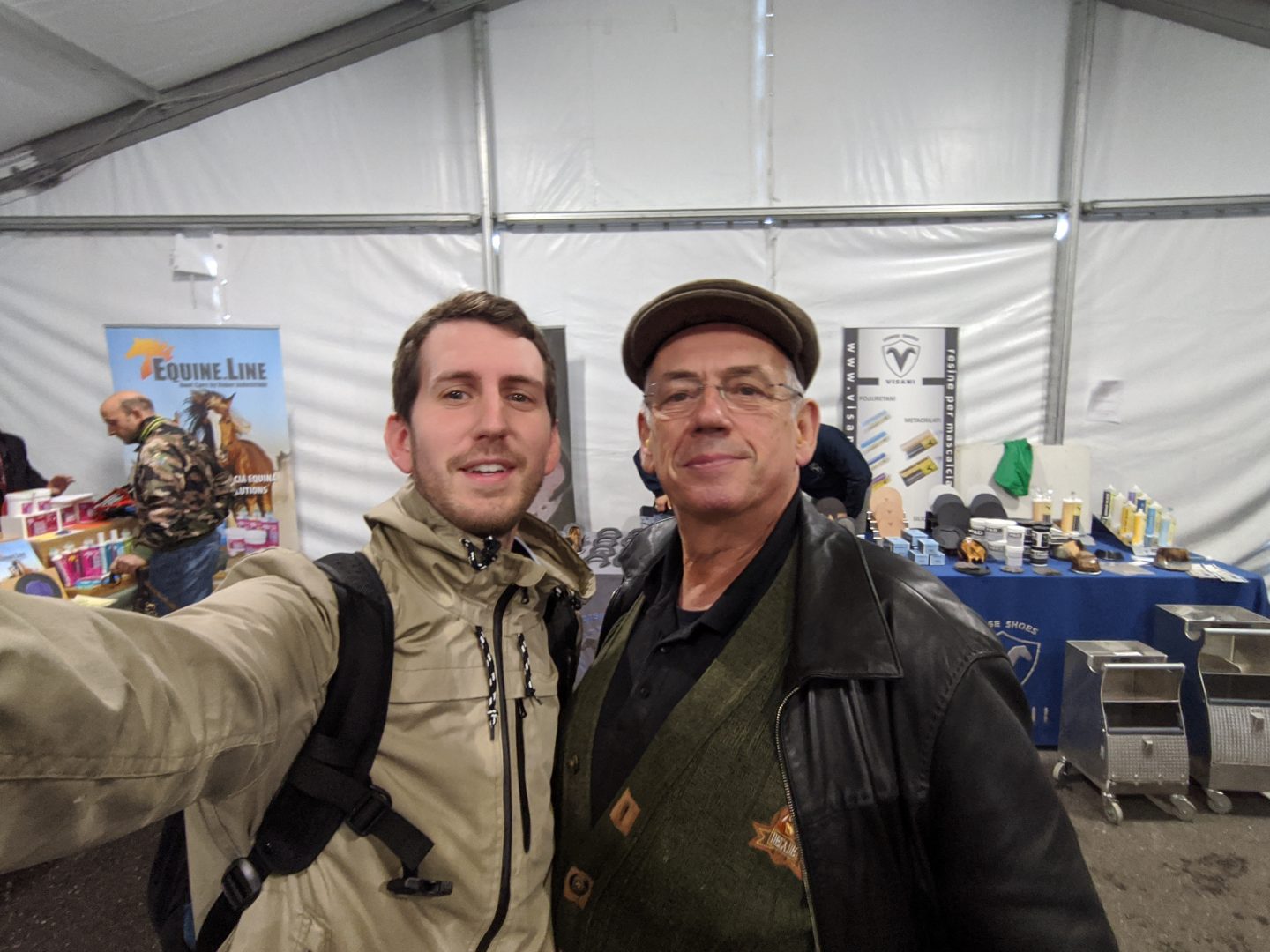
Meeting with Denis Leveillard
Farriers and trimmers, fundamentals in common
The living environment (box, meadow, paddock paradise, etc.), physical condition (good condition, overload, lack of protein, etc.), use (high-level sport, horse trekking, company, respectful riding, etc.) are essential information to determine the possible management of the feet for each horse.
On the trimming side, respect for the foot is a priority, with the search for a strong foot, compared to a simply clean foot.
The use of high-performance tools and the sharpening capacity are also factors that can have significant impacts: “These days it is very easy to sharpen, to have very sharp tools. It therefore becomes very easy to adorn too much by wanting to keep clean…”, warns Florian. Without omitting a fundamental distinction, between the implementation of a trimming to stay barefoot, compared to a trimming (or preparation of the foot) in order to put down an horseshoe.


Farrier and podiatry, the antipodes
“Some say that trimmers and farriers are poles apart. Which shouldn’t be the case. Our goal is the same, to take care of the horses. The concern is, as so often, in the extremes. Obviously, what brings water to the mill, whether in one direction or the other, is in the quality of the work and the professional. This is called reputation (which can be used as we see fit). This is a fact that applies to all professionals, as we can hear in each profession: bad mechanics, bad heating engineers, bad trimmers, bad blacksmiths… I don’t think we can hope to have a natural horse with a use that is not. Of course there are exceptions, inherent in the fact that we work with living things and that there are therefore no absolute rules.
But in the vast majority of cases, we will not see wild horses jumping an obstacle course at 1.40m, nor traveling 160km at an average speed of 20 km/h, making sliding stops or even sorting cattle… It is our responsibility to adapt our work to the use of horses for their welfare and comfort.”
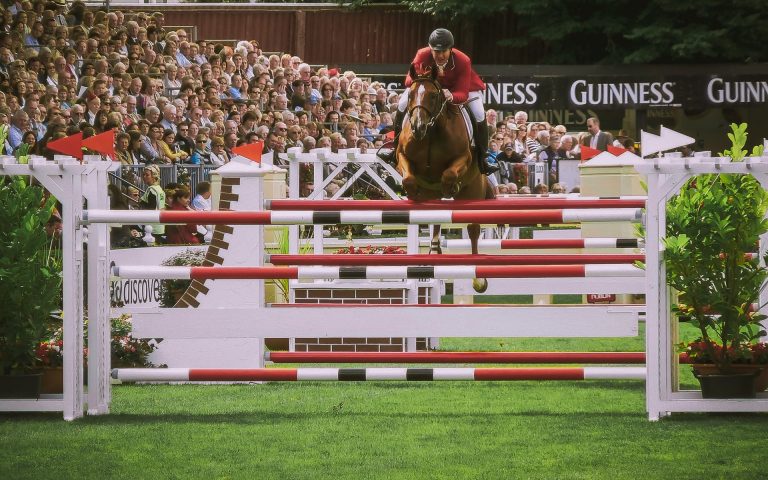
“As long as a horse can bear to work barefoot, and can be comfortably maintained in this way, farriers are not against this management. But, as a professional, it is also our duty to alert the client when we notice that something is wrong: physical changes, suffering from the hoof capsule… This goes beyond human farrier / podiatry ideologies, because the well-being and respect for the horse is at stake.”


